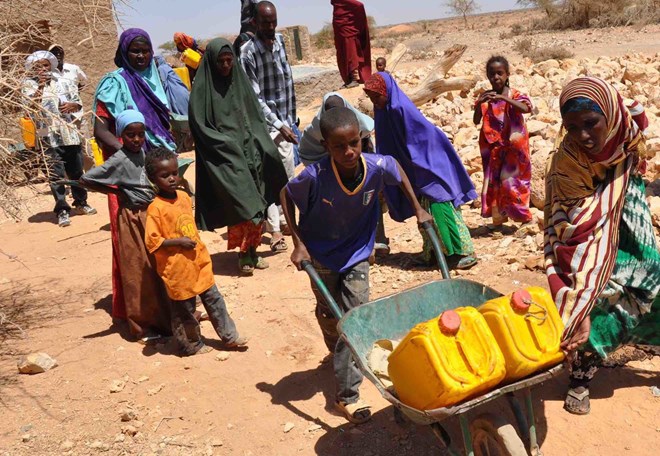
Wednesday April 3, 2019 Header Image: Wikimedia
Header Image: Wikimedia
NAIROBI (Xinhua) -- The Intergovernmental Authority on Development (IGAD), a regional bloc, on Wednesday warned of a looming food crisis in eastern Africa where 10.7 million people are food insecure.
advertisements
IGAD said immediate action is needed following a foreseen high risk of worsening food insecurity in parts of Kenya, Ethiopia, Somalia and Uganda if forecasted rainfall deficits materialize."There is need for immediate and coordinated planning by governments, donors and all concerned stakeholders to respond to the potentially deteriorating food security and nutrition situation," IGAD's Food Security and Nutrition Working Group said in a statement issued in Nairobi.
The bloc said the delay in the start of the March-June long rains, coupled with forecasted rainfall deficits in April, are building on already dry conditions due to poor October-December rains over some parts of eastern Africa.
It said the poor performance of the past season's short rains already led to below-average crop production and deteriorating pastures in some agro-pastoral and marginal mixed-farming areas.
"If the forecasted rainfall deficits materialize in April, this would lead to an atypical increase in food insecurity, likely to peak from June to October," it added.
IGAD warned that northeastern Kenya, souther and central Somalia, and southern and eastern Ethiopia would likely experience a rapid decline in pastoral conditions.
The authority attributed the current dry conditions and high temperatures to deteriorations in pastures and water availability in these areas, affecting livestock body conditions, reducing milk production and leading to earlier-than-normal livestock migration.
"Crop production would also be below average in marginal agricultural areas of Kenya, Somalia and Ethiopia.
"This, along with the potential of lower than average production of key regional players such as Uganda and Tanzania, could cause price increases and reduce access of poor households to basic food supplies," it added.
IGAD called on member states to conduct regular monitoring using remote sensing and joint field rapid assessments in worst-affected areas, with particular emphasis on performance of the 2019 long rains and crop production levels and cereal supplies.
"You should also monitor pasture, water, and livestock body conditions, prices of key cereals and livestock and food security outcomes," said IGAD.
It called for the use of integrated management of acute malnutrition and a further supply-chain pipeline for ready-to-use supplementary food and ready-to-use therapeutic food.
The bloc warned that although the food insecure population is lower than numbers observed during the drought of 2017 (15.3 million people), there is a high risk of a worsening situation due to forecasted rainfall deficits.
Currently, despite poor agricultural and pastoral conditions, favorable market prices for key staple foods and livestock are facilitating food access for households.
According to IGAD, good performance of last year's long rains has also mitigated to some extent a further deterioration of conditions.
Cereal prices remain largely below average while livestock prices are similar to or above average across most markets. Exceptions, however, are conflict-affected areas of southern Ethiopia.
"Although a temporary relief is expected in pastoral areas during the second half of the rainy season (end of April through May), should rainfall deficits occur, the severity and size of the food insecure population might quickly rise afterwards," it said.
The regional bloc urged countries to map current and planned interventions to ensure a more coordinated response and strengthen the existing food security information systems and coordination.
The eight-member group comprises of Djibouti, Eritrea, Ethiopia, Kenya, Somalia, South Sudan, Sudan and Uganda.